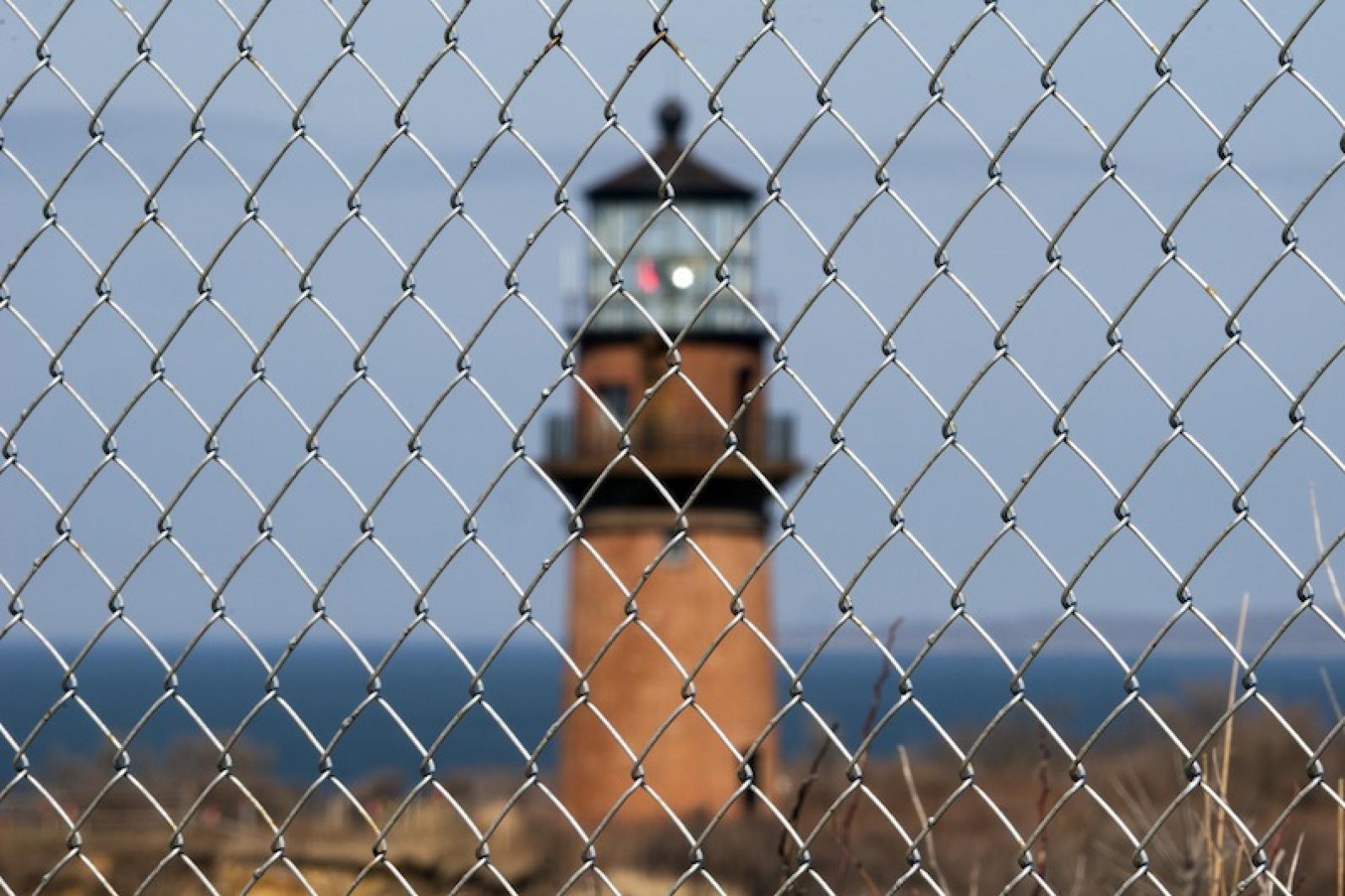With the ground thawing and spring in the air, final preparations for the Gay Head Light relocation project have begun. Archaeologists have completed a survey of the site and the U.S. Coast Guard was at work Tuesday in drizzling rain to install a temporary beacon at the lookout over the Gay Head Cliffs.
The Coast Guard Aid to Navigation Team in Woods Hole was at work Tuesday installing the temporary metal beacon at the lookout past the shops at Aquinnah Circle.
Coast Guard station Menemsha will not be directly involved in the lighthouse project, but senior chief Robert Riemer said the temporary beacon would likely share the Gay Head Light’s historic red-and-white signal pattern. When the new light comes on the old light will go out, a transition that is expected some time next week.
The last day to visit the lighthouse in its current location will be Saturday from 2 to 5 p.m. Town officials expect the actual move to begin sometime in May.
An excavation area around the lighthouse has been staked out and a number of square pits that were dug by Public Archaeology Lab of Pawtucket, R.I., have been filled in. “You can’t even tell they were there,” Len Butler, chairman of the lighthouse relocation committee, said Monday.
A large area surrounding the 1856 lighthouse, along with a portion of Aquinnah Circle, has been fenced off. A sign near the lighthouse reads, “Closed for the Season.” Traffic may pass through from 7 a.m. to 7 p.m., but may be held up as materials are carried to and from the site. The VTA will have a temporary bus stop at the foot of the circle for use between 7 p.m. and midnight.
In February, the lighthouse was formally transferred from the U.S. General Services Administration to the town, ending a yearlong process involving local, state and federal authorities. The U.S. Coast Guard had declared the lighthouse surplus property in 2013.
After the transfer and preparatory to the move, the first step was a survey of the brick foundation of the former lightkeeper’s quarters. The most recent keeper’s dwelling was removed in 1961, after the light became automated.
Town administrator Adam Wilson visited the site last week and posted pictures on his Facebook page showing PAL workers in orange vests, and the pits they had dug to reveal the brick foundation. The foundation has been mapped and the soil replaced, Mr. Wilson said Monday.
International Chimney Corp. based in Buffalo, N.Y., will move the lighthouse, and a long list of local, state and federal agencies are also involved. The company began exploratory work last fall and has developed a detailed engineering plan.
The 400-ton brick-and-masonry structure will travel about 135 feet to the east, to a spot the U.S. Geologic Survey expects to be safe from erosion for at least 140 years. Joe Jakubik, historic preservation division manager at International Chimney, said he expected work on the structure, including bracing on the interior and exterior, to begin by the end of April.
The time frame for the move has already shifted due to the harsh weather in January and February, and Mr. Jakubik said the move itself could take anywhere from one to three weeks.
“When we are moving structures — especially historic structures, which are very important — everything goes when it’s ready,” he said. “We are not in any speed race . . . It will take whatever time it takes.” The company has relocated many historic buildings around the country, including several lighthouses. It is currently working to relocate two historic four-story buildings in Washington, D.C. And this is not International Chimney’s first Vineyard job; the company moved a large private home on Chappaquiddick two summers ago.
Progress has been steady this year, with all parties working to expedite the transfer and several contractors hired for landscaping, excavation, management and other aspects of the project.
In one setback, the town learned several weeks ago that the site contains habitat for the endangered broad tinker’s weed. Town officials are now working with the Natural Heritage and Endangered Species Program to mitigate any disturbance. Normally, the state would require a survey of the area, but since that can’t happen until June, the town hopes to place a conservation restriction on nearby land instead.
Mr. Butler hoped the issue would be resolved within two weeks, but added that work could not continue until an agreement is in place.
Mr. Wilson was optimistic that a major delay could be avoided. “We are of the understanding that if we put together this plan, that we should be able to get the necessary approvals to go forward,” he said Friday. “The only alternative is to wait till July when the broad tinker’s weed blooms, and we are not going that route.”








Comments (4)
Comments
Comment policy »